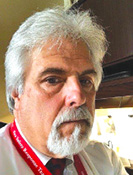Including Radiology in Emergency Plans is Critical
Radiology departments are taking a proactive approach to emergency preparedness.
BY RICHARD DARGAN
August 01, 2018
On the night of July 14, 2016, tourists and locals were celebrating Bastille Day along one of the beachfront promenades in Nice, France, when a terrorist drove a truck through the crowd, leaving hundreds of battered bodies in his wake.
Almost 200 of the injured ended up before radiologist Nicolas Amoretti, MD, at the University Hospital of Nice. Many patients were unconscious, others did not speak French, and some had no identification, forcing hospital staff to write identifiers on the patients’ arms with markers. When the influx of information between the CT scanner and the operating room (OR) overloaded the system, transmissions were delayed by as long as 20 minutes. Radiologists used telephones to communicate with surgeons in the OR while reading from the screen.
Further problems ensued when a second CT scanner was utilized to handle the overflow of patients. “The second CT was on a different floor,” Dr. Amoretti recalled. “The staff bringing in patients didn’t know where it was, so we had to write directions on paper.”
Despite the challenges, doctors performed 18 surgeries that night and no patients were misidentified. Dr. Amoretti and colleagues detail the experience in the May 2018 Radiology study, “Terrorist Attack in Nice, France, in July 2016: Massive Influx of Patients to a Radiology Department.” (See Web Extras.)
Requirements for such plans vary by country. For example, the night of the terrorist attack, the University Hospital of Nice operated under its White Plan, an emergency preparedness procedure based on the broader nationwide framework known as the Orsan Plan.
In the U.S., the Joint Commission requires hospitals to have an Emergency Operations Plan describing how a facility will respond to and recover from all hazardous incidents. However, the Joint Commission does not require hospitals to include specialty departments, such as radiology.
Almost 200 of the injured ended up before radiologist Nicolas Amoretti, MD, at the University Hospital of Nice. Many patients were unconscious, others did not speak French, and some had no identification, forcing hospital staff to write identifiers on the patients’ arms with markers. When the influx of information between the CT scanner and the operating room (OR) overloaded the system, transmissions were delayed by as long as 20 minutes. Radiologists used telephones to communicate with surgeons in the OR while reading from the screen.
Further problems ensued when a second CT scanner was utilized to handle the overflow of patients. “The second CT was on a different floor,” Dr. Amoretti recalled. “The staff bringing in patients didn’t know where it was, so we had to write directions on paper.”
Despite the challenges, doctors performed 18 surgeries that night and no patients were misidentified. Dr. Amoretti and colleagues detail the experience in the May 2018 Radiology study, “Terrorist Attack in Nice, France, in July 2016: Massive Influx of Patients to a Radiology Department.” (See Web Extras.)
A Proactive Approach to Emergency Preparedness
From terrorism incidents and mass shootings to a string of natural disasters, emergency preparedness has never been more important in health care. While no health care facility can fully prepare for the unpredictability of such an incident, having an emergency/crisis plan in place is necessary to mitigate the impact.Requirements for such plans vary by country. For example, the night of the terrorist attack, the University Hospital of Nice operated under its White Plan, an emergency preparedness procedure based on the broader nationwide framework known as the Orsan Plan.
In the U.S., the Joint Commission requires hospitals to have an Emergency Operations Plan describing how a facility will respond to and recover from all hazardous incidents. However, the Joint Commission does not require hospitals to include specialty departments, such as radiology.

Bilow
For that reason, imaging may be left out when hospital administrators develop emergency preparedness plans, according to Ronald M. Bilow, MD, an emergency radiology director at UTHealth McGovern Medical School who is affiliated with Memorial Hermann Texas Medical Center, both part of Texas University Medical Center, Houston. Both facilities were in the path of Hurricane Harvey, which tore through Houston in August 2017.
“Most hospitals create plans through the emergency center,” said Dr. Bilow, who has held various leadership roles in the American Society of Emergency Radiology (ASER). “Some might include surgery and anesthesia, but traditionally many have not included radiology departments.”
That is likely to change as hospitals experience more disasters and realize the importance of including various specialties, including imaging. Radiologists are the best-trained to use imaging tools to quickly triage patients and provide surgeons with precise information on life-threatening injuries.
Dr. Bilow advises radiologists to take a proactive approach to emergency preparedness by seeking training including online courses offered through the Federal Emergency Management Agency (FEMA) Emergency Management Institute and attending workshops such as the ASER Mass Casualty Incident (MCI) Workshop which will be offered for the first time at the society’s annual meeting this fall. (See sidebar).
In his case, Dr. Bilow has done exhaustive research on the topic, completed online and live classroom courses and participated in drills/exercises at the Texas Medical Center. He has shared that knowledge through published articles and collaborations with ASER.
“Emergency preparedness is a constant work in progress,” he said. “My motto is, ‘Hope for the best, plan for the worst.’”
Hurricane Harvey, a Category 3 storm, showed how a powerful storm could derail staff plans put in place to handle emergencies.
“Most hospitals create plans through the emergency center,” said Dr. Bilow, who has held various leadership roles in the American Society of Emergency Radiology (ASER). “Some might include surgery and anesthesia, but traditionally many have not included radiology departments.”
That is likely to change as hospitals experience more disasters and realize the importance of including various specialties, including imaging. Radiologists are the best-trained to use imaging tools to quickly triage patients and provide surgeons with precise information on life-threatening injuries.
Dr. Bilow advises radiologists to take a proactive approach to emergency preparedness by seeking training including online courses offered through the Federal Emergency Management Agency (FEMA) Emergency Management Institute and attending workshops such as the ASER Mass Casualty Incident (MCI) Workshop which will be offered for the first time at the society’s annual meeting this fall. (See sidebar).
In his case, Dr. Bilow has done exhaustive research on the topic, completed online and live classroom courses and participated in drills/exercises at the Texas Medical Center. He has shared that knowledge through published articles and collaborations with ASER.
“Emergency preparedness is a constant work in progress,” he said. “My motto is, ‘Hope for the best, plan for the worst.’”
Valuable Lessons Learned from Harvey
Indeed, every disaster offers opportunities to learn and update the emergency plan where needed.Hurricane Harvey, a Category 3 storm, showed how a powerful storm could derail staff plans put in place to handle emergencies.

Haygood
Radiologist Tamara Miner Haygood, PhD, MD, was scheduled to be on-call in the musculoskeletal section of the radiology department at MD Anderson Cancer Center, Houston, the weekend the storm hit. MD Anderson, like many hospitals, had plans for a radiology ride-out team to stay and work during the storm, with a recovery team on standby to provide relief. Dr. Haygood was not on either team.
“I took a bike ride Saturday,” she recalled. “It was a gorgeous afternoon. But when the forecast predicted such heavy rain overnight, I was sure I would not be able to get my car out of the driveway Sunday morning.”
She headed to work at MD Anderson, fully prepared to stay the night, which was a fortunate decision. By Sunday morning, the Houston area had experienced devastating flooding, leaving many areas under water.
By the time a decision was made to call in the ride-out team, the roads were impassable, so staff on-site at the facility created their own ride-out team. As it turned out, Dr. Haygood was the only attending radiologist in the hospital during the storm. She worked all day Sunday, slept over that night and worked half of Monday. While she was the sole attending radiologist in-house, other radiologists worked through the storm remotely.
“Electricity and internet were functional through the storm, so we were able to provide timely physician services,” Dr. Haygood said. “During the hurricane, we had an army of radiologists reading reports from home-based work stations.”
At Ben Taub Hospital, within the Texas University Medical Center campus, radiology residents Varshana Gurusamy, MD, and Joshua Carlton, DO, got a crash course in practicing during an emergency the weekend of Hurricane Harvey.
“I was on duty that night because it was my scheduled night rotation, but the staff/attending radiologists were part of the hospital’s emergency plan,” Dr. Gurusamy said. “They had backup staff in place who would help read reports from home and they also provided support to Dr. Carlton and me.”
“I took a bike ride Saturday,” she recalled. “It was a gorgeous afternoon. But when the forecast predicted such heavy rain overnight, I was sure I would not be able to get my car out of the driveway Sunday morning.”
She headed to work at MD Anderson, fully prepared to stay the night, which was a fortunate decision. By Sunday morning, the Houston area had experienced devastating flooding, leaving many areas under water.
By the time a decision was made to call in the ride-out team, the roads were impassable, so staff on-site at the facility created their own ride-out team. As it turned out, Dr. Haygood was the only attending radiologist in the hospital during the storm. She worked all day Sunday, slept over that night and worked half of Monday. While she was the sole attending radiologist in-house, other radiologists worked through the storm remotely.
“Electricity and internet were functional through the storm, so we were able to provide timely physician services,” Dr. Haygood said. “During the hurricane, we had an army of radiologists reading reports from home-based work stations.”
At Ben Taub Hospital, within the Texas University Medical Center campus, radiology residents Varshana Gurusamy, MD, and Joshua Carlton, DO, got a crash course in practicing during an emergency the weekend of Hurricane Harvey.
“I was on duty that night because it was my scheduled night rotation, but the staff/attending radiologists were part of the hospital’s emergency plan,” Dr. Gurusamy said. “They had backup staff in place who would help read reports from home and they also provided support to Dr. Carlton and me.”

Gurusamy
Dr. Gurusamy, now a third-year resident at Houston’s Baylor College of Medicine, and Dr. Carlton found themselves hunkered down in the imaging area in the Emergency Department known as “the pit,” throughout the weekend as the flood waters crept close to the hospital’s front doors.
The two residents worked and rested in alternating four-hour shifts, although sleep was almost impossible because of the storm sirens and hospital noise. When Dr. Gurusamy needed to read a spinal cord compression MRI for the first time, she was guided through the exam remotely by the attending physician. She was finally relieved on Monday after almost two days of high-stress work with little sleep.
“There was still a lot of water on the roads when I left,” she said. “I called my dad and made him stay on the phone with me so I wouldn’t fall asleep while I was driving home.”
Take power, for instance. the Joint Commission practices strict oversight of hospital backup systems, requiring 30-minute generator tests every month and a four-hour test every 36 months. However, even approved generators can fail in the face of powerful forces like earthquakes.
Aftershocks from a 2011 earthquake centered near Christchurch, New Zealand, knocked out the generators at Christchurch Public Hospital and nearby Christchurch Women’s Hospital, rendering CT unusable for several hours. Radiologists relied on portable x-ray and ultrasound, with only flashlights and headlamps at times to provide illumination.
During Hurricane Sandy in 2012, hospitals across the east coast struggled to maintain power and keep their doors open. NYU Langone Medical Center sustained major flooding and experienced power outages throughout the hospital, including losing the backup generator.
The two residents worked and rested in alternating four-hour shifts, although sleep was almost impossible because of the storm sirens and hospital noise. When Dr. Gurusamy needed to read a spinal cord compression MRI for the first time, she was guided through the exam remotely by the attending physician. She was finally relieved on Monday after almost two days of high-stress work with little sleep.
“There was still a lot of water on the roads when I left,” she said. “I called my dad and made him stay on the phone with me so I wouldn’t fall asleep while I was driving home.”
Maintaining Power is Key
Hurricane Harvey demonstrates why radiology departments preparing for emergencies should be mindful of Dr. Bilow’s words: Plan for the worst.Take power, for instance. the Joint Commission practices strict oversight of hospital backup systems, requiring 30-minute generator tests every month and a four-hour test every 36 months. However, even approved generators can fail in the face of powerful forces like earthquakes.
Aftershocks from a 2011 earthquake centered near Christchurch, New Zealand, knocked out the generators at Christchurch Public Hospital and nearby Christchurch Women’s Hospital, rendering CT unusable for several hours. Radiologists relied on portable x-ray and ultrasound, with only flashlights and headlamps at times to provide illumination.
During Hurricane Sandy in 2012, hospitals across the east coast struggled to maintain power and keep their doors open. NYU Langone Medical Center sustained major flooding and experienced power outages throughout the hospital, including losing the backup generator.

Perez
“My biggest concern was, how do I keep the department going, regardless of the problem?” said Enrico M. Perez, RT, administrative director, Department of Radiology at NYU Winthrop Hospital in Mineola, NYU Langone Medical Center, N.Y. “How do you respond and maintain function when something like that happens in the middle of the night and the department’s not running?”
Ultimately, NYU Langone Medical Center received $1.1 billion in federal funds which were allocated not only for repairs and reconstruction, but for planning and mitigation projects to better prepare the facility to withstand future disasters.
“After the terrorist incident, we determined that the main factors that need to be corrected are administrative and technical factors, such as management of patient identities and patient flow to imaging examinations,” Dr. Amoretti said. “The failure to transmit CT results and reports to the surgical suites and resuscitation departments also proved to be a particular challenge.”
In the after-action assessment, or “hot wash” routinely performed in the wake of disasters, Dr. Bilow suggested revising staff shifts for hurricanes for radiologists within the Texas University Medical Center. Previously, radiologists were required to make sure the relief person was there before they left. The new schedule requires a radiologist to stay until a second radiologist comes in.
“This way, there will always be two radiologists on site when a threat is imminent,” he said.
Hospitals that have not actually experienced a disaster can still put in the extra work to plan ahead.
Dr. Bilow suggests hospitals conduct facility-wide drills designed to test emergency response and find potential flaws. For radiology, this is a good opportunity to practice evacuation of patients and the maneuvering of portable equipment through what may be very cramped spaces.
This kind of training may not be what radiologists envisioned when they started medical school, but it is an absolute necessity in today’s world, according to Perez, who worked through the 9/11 terrorist attacks and Hurricane Sandy.
“We have to be ready for the people who need us,” Perez said. “That’s the guiding principle behind all of our plans.”
Ultimately, NYU Langone Medical Center received $1.1 billion in federal funds which were allocated not only for repairs and reconstruction, but for planning and mitigation projects to better prepare the facility to withstand future disasters.
Rethinking Disaster Plans
For hospitals that successfully endure such incidents, the lessons learned are invaluable for updating emergency preparedness plans, which remain a work in progress.“After the terrorist incident, we determined that the main factors that need to be corrected are administrative and technical factors, such as management of patient identities and patient flow to imaging examinations,” Dr. Amoretti said. “The failure to transmit CT results and reports to the surgical suites and resuscitation departments also proved to be a particular challenge.”
In the after-action assessment, or “hot wash” routinely performed in the wake of disasters, Dr. Bilow suggested revising staff shifts for hurricanes for radiologists within the Texas University Medical Center. Previously, radiologists were required to make sure the relief person was there before they left. The new schedule requires a radiologist to stay until a second radiologist comes in.
“This way, there will always be two radiologists on site when a threat is imminent,” he said.
Hospitals that have not actually experienced a disaster can still put in the extra work to plan ahead.
Dr. Bilow suggests hospitals conduct facility-wide drills designed to test emergency response and find potential flaws. For radiology, this is a good opportunity to practice evacuation of patients and the maneuvering of portable equipment through what may be very cramped spaces.
This kind of training may not be what radiologists envisioned when they started medical school, but it is an absolute necessity in today’s world, according to Perez, who worked through the 9/11 terrorist attacks and Hurricane Sandy.
“We have to be ready for the people who need us,” Perez said. “That’s the guiding principle behind all of our plans.”